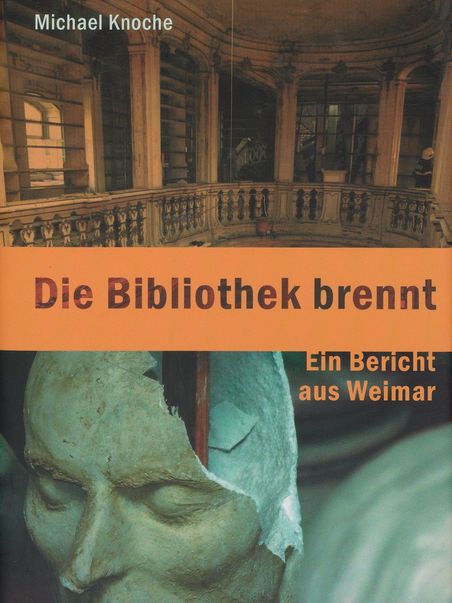Projects of the Klassik Stiftung Weimar are funded by the European Regional Development Fund (ERDF) and the Free State of Thuringia, represented by the State Chancellery of Thuringia, Department of Culture and the Arts.
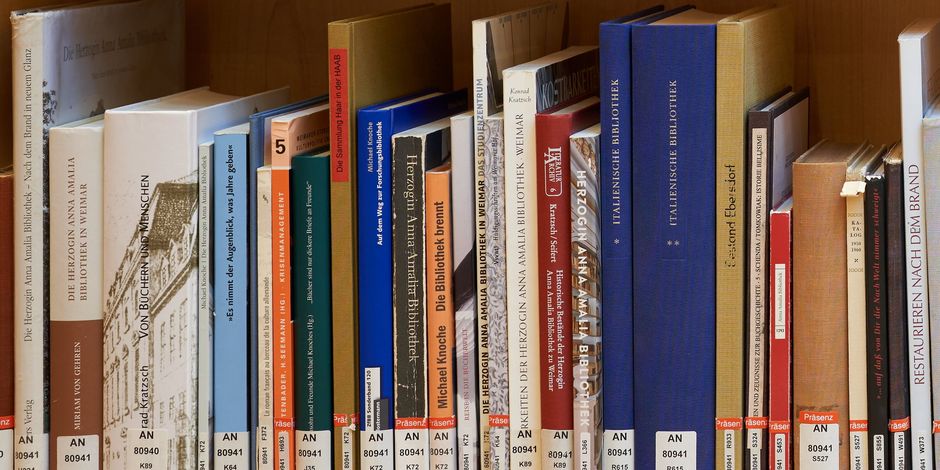
Literature about the Library
Here you will find a selection of publications on the Herzogin Anna Amalia Bibliothek.
The Bibliography on the history of the Herzogin Anna Amalia Bibliothek and its holdings provides a complete overview of all publications on the Herzogin Anna Amalia Bibliothek.
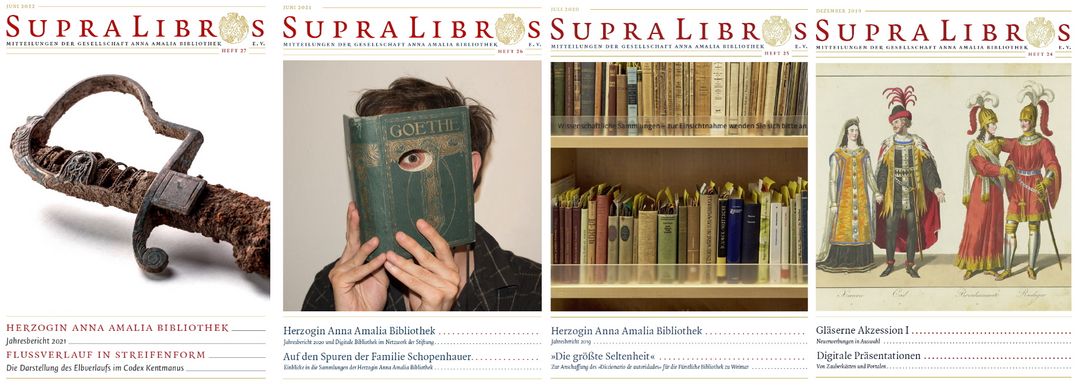
SupraLibros
The annual journal brings together the annual report of the Herzogin Anna Amalia Bibliothek and its friends' society, the Gesellschaft Anna Amalia Bibliothek e.V. It also provides information on current topics relating to the library and the society, including research projects, exhibitions, new acquisitions and projects with schoolchildren.
SupraLibros. Mitteilungen der Gesellschaft Anna Amalia Bibliothek e.V. Herausgegeben von der Gesellschaft Anna Amalia Bibliothek e.V. und der Herzogin Anna Amalia Bibliothek. 2007 ff.
Available online on the publication server.
Are you interested in a printed copy? Then become a member of the Gesellschaft Anna Amalia Bibliothek e.V.! All members will receive the issues directly after publication.
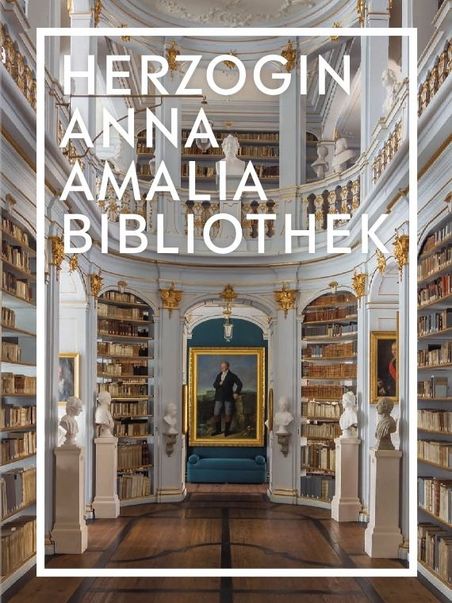
Herzogin Anna Amalia Bibliothek
Current publication on the library
Series “Im Fokus”
This volume tells the story of the archive and research library from its beginnings in the 16th century to the present day and takes readers on a tour of its collection and knowledge rooms: in the historic library building, the route leads from the Renaissance Hall with the exhibition “Cranach's Torrent of Images” to the Rococo Hall from 1766 and on to the Book Tower. Via the underground stacks you reach the Study Centre with the central Book Cube, which opened in 2005. Thematic contributions present the diverse collections: They focus on manuscripts from the time before printing as well as the pamphlets of the Reformation period, the world's largest Faust collection and the so-called ash books, which have been undergoing restoration since the fire in 2004.
Further information on the literature used in the articles.
Herzogin Anna Amalia Bibliothek. Herausgegeben von Reinhard Laube. Berlin : Deutscher Kunstverlag, 2022.
Cranach's Torrent of Images
Catalogue of the exhibition in the Renaissance Hall of the Duchess Anna Amalia Library
Series “Konstellationen”
How are images used to form opinions? How are they used to show one person in a better light or to ridicule another? And how is it possible to bring countless images into the world in a very short space of time? Timeless questions that are just as relevant today as they were to Lucas Cranach the Elder's contemporaries. Together with his son Lucas Cranach the Younger and their workshop, he is one of the most productive artists in history. Many thousands of paintings emerged from the Cranach workshop. There was no medium that they did not master, paintings, prints, illustrated books, medals - an unprecedented torrent of images in the service of power and opinion.
Cranachs Bilderfluten. Herausgegeben von Sebastian Dohe und Veronika Spinner. Weimar : Klassik Stiftung Weimar, 2022.
Available online on the Publication server.
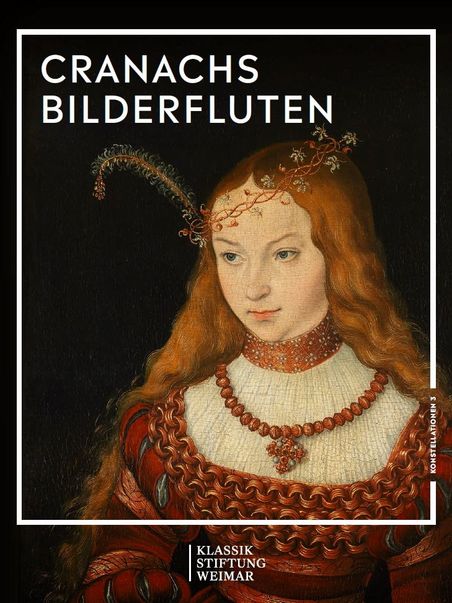
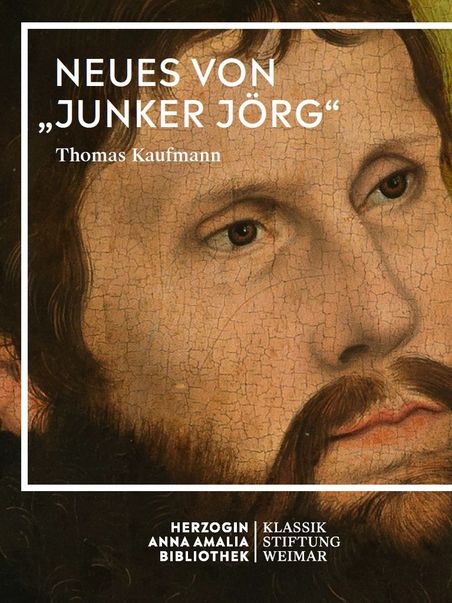
Thomas Kaufmann: News from “Junker Jörg”
Lukas Cranach's early Reformation prints. Observations, enquiries, theses and corrections
Series “Konstellationen”
The Göttingen Reformation historian Thomas Kaufmann analyses the early Reformation prints of Lukas Cranach the Elder from the perspective of his collaboration with Luther and the Wittenberg circle. In doing so, he arrives at some new interpretations of certain serial works such as the “Passional Christi und Antichristi” and the illustrations for the first edition of the New Testament in Luther's translation (the so-called September Testament). With regard to the well-known woodcut of the bearded Luther (“Junker Jörg”), Kaufmann breaks with the previous dating of 1521/1522 and shows that it is a document of militant anti-papalism from 1537 on the one hand, and a monument of memoria on the other.
Thomas Kaufmann: Neues von „Junker Jörg“. Lukas Cranachs frühreformatorische Druckgraphik. Beobachtungen, Anfragen, Thesen und Korrekturen. Weimar : Klassik Stiftung Weimar, [2020].
Printed copy available in the BoD book shop. Available online on the Publication server.
Fire books | Ash books
Perspectives on Hannes Möller's artistic intervention in the Herzogin Anna Amalia Bibliothek
Series “Konstellationen”
With the exhibition “Fire books | Ash books”, the artist Hannes Möller has opened a new exhibition space in the Study Centre of the Herzogin Anna Amalia Bibliothek. Contributions from the fields of politics, art history, cultural philosophy, restoration science and the library show that these images raise fundamental questions about culture and cultural tradition. The library's new publication series opens up these perspectives.
Brandbücher | Aschebücher. Perspektiven auf Hannes Möllers künstlerische Intervention in der Herzogin Anna Amalia Bibliothek. Herausgegeben von Reinhard Laube. Weimar : Klassik Stiftung Weimar, 2020.
Printed copy available in the BoD book shop. Available online on the Publication server.
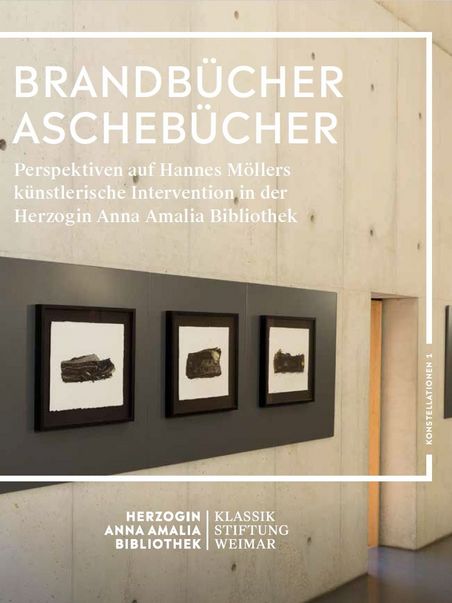
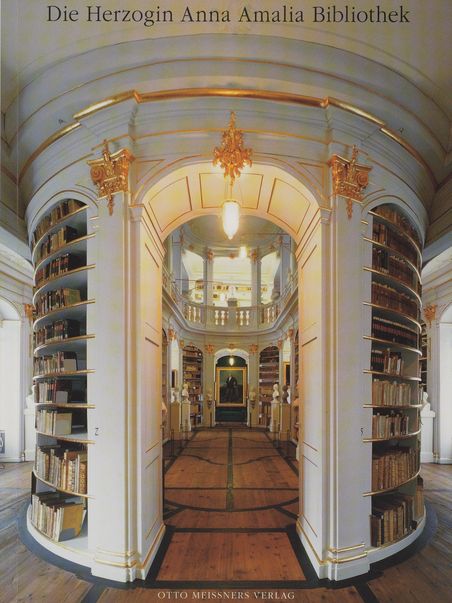
Michael Knoche: The Herzogin Anna Amalia Bibliothek. A Portrait
This richly illustrated, informative and handy volume provides an overview of the beginnings, construction, furnishings and holdings of the library, which today sees itself as a research library for literary and cultural history with a focus on German literature from around 1800. Despite the losses caused by the fire in 2004, the Herzogin Anna Amalia Bibliothek is a treasure trove of a special kind. The historic library building with the Rococo Hall as the centrepiece of the unique ensemble attracts around 90,000 visitors every year.
Michael Knoche: Die Herzogin Anna Amalia Bibliothek. Ein Portrait. Berlin : Otto Meissner, 2016 (zweite, erweiterte und überarbeitete Auflage).
Restoration after the Fire. Saving the books of the Herzogin Anna Amalia Bibliothek
Ten years after the devastating fire on 2 September 2004, the Herzogin Anna Amalia Bibliothek is taking stock of the nature and extent of the damage and the conservation of 118,000 fire- and water-damaged books and music manuscripts.
The book accompanying the exhibition shows the status and progress of the restoration work. It explains the connections between the restoration decisions and the project organisation of the research library, the restoration science environment and the market economic conditions. In terms of restoration expertise, the focus is on the concept of quantity treatment practised in Weimar for binding and paper restoration. The various types of damage are described, selected restoration processes are outlined and illustrated with numerous photographs and diagrams. The book also documents the loss of the books that were irretrievably destroyed in 2004.
Restaurieren nach dem Brand. Die Rettung der Bücher der Herzogin Anna Amalia Bibliothek. Herausgegeben von Jürgen Weber und Ulrike Hähner. Petersberg : Michael Imhof, 2014.
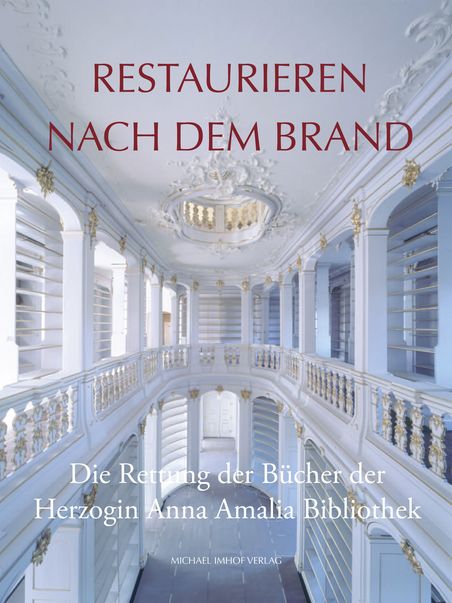
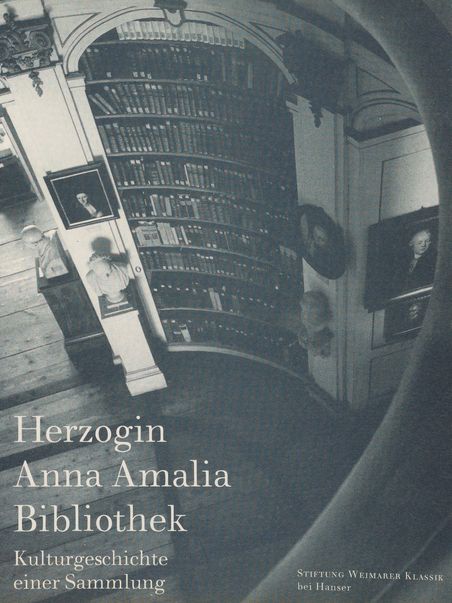
Herzogin Anna Amalia Bibliothek. Cultural history of a collection
In the 1760s, Duchess Anna Amalia had the former Green Palace, a Renaissance building that had last served as an armoury, converted for library purposes. In five years, a show library was created not far from the city palace and princely residence, which was repeatedly described with enthusiasm as a rococo church of books, in which scholars were shown the sublimity of an encyclopaedic ideal. Originating from a princely book collection, the library became an important place for the educated middle classes during the period in which Goethe was entrusted with its supervision, while its holdings continued to grow.
The book, illustrated with a series of photographs by American artist Laura Padgett, is the first to describe the history of the 'Weimar Book Treasure', which numbers almost one million, from its beginnings in the 16th century to the present day in the context of Weimar's cultural history.
Herzogin Anna Amalia Bibliothek. Kulturgeschichte einer Sammlung. Herausgegeben von Michael Knoche. Weimar : Klassik Stiftung Weimar, 2013 (Nach einer ersten Auflage bei Hanser, 1999).
The Herzogin Anna Amalia Bibliothek – After the fire, new splendour
The reopening of the historic building of the Duchess Anna Amalia Library took place exceptionally soon after the fire disaster in September 2004 - it took the builders, technicians, librarians, organisers, donors, helpers and academics just three years to restore the severely damaged main building with its unique rococo hall to its former glory. This volume accompanies the refurbishment and restoration and offers a differentiated insight into the history of the building and library.
Die Herzogin Anna Amalia Bibliothek – Nach dem Brand in neuem Glanz. Herausgegeben von Walther Grunwald, Michael Knoche und Hellmut Seemann. Berlin : Meissner, 2007.
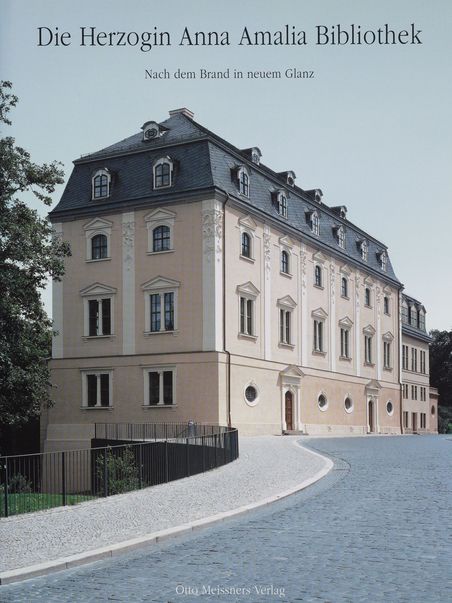
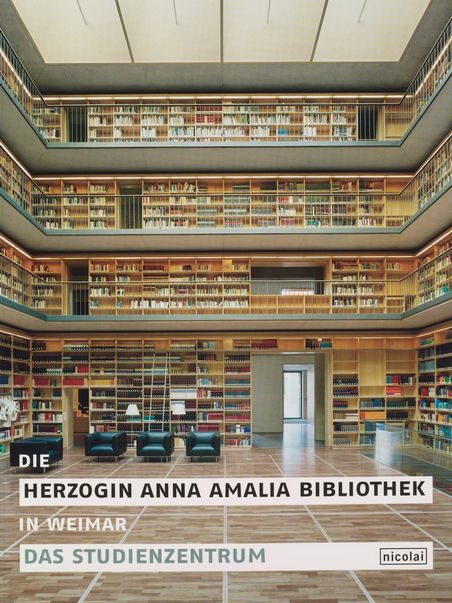
The Herzogin Anna Amalia Bibliothek in Weimar: The Study Centre
The Herzogin Anna Amalia Bibliothek celebrated its reopening as a research library with the inauguration of its new Study Centre on 4 February 2005. The new library quarter, in which all functional areas of the library are concentrated, from the lending desk to the media library, offers around 7000 square metres of space for one million books and their users. For the first time, the 300-year-old library's holdings, which date from the 9th century to the present day, have been brought together in one place.
This volume documents the history of the extension building and the two underground stacks in the immediate vicinity of the historic main building and presents the concept of the research library.
Die Herzogin Anna Amalia Bibliothek in Weimar: Das Studienzentrum. Herausgegeben von Michael Knoche. Mit Fotografien von Claus Bach und Ulrich Schwarz. Berlin : Nicolai, 2006.
Michael Knoche: The Library is on Fire. A report from Weimar
2 September 2004, 8.25 p.m.: Fire alarm in the Herzogin Anna Amalia Bibliothek. The largest library fire in German post-war history, triggered by a faulty cable connection on the third floor, takes its course. 35 works of art and 50,000 volumes, mainly from the 17th and 18th centuries, are destroyed and a further 62,000 books are destroyed, some of them badly damaged. The library building, which is a UNESCO World Heritage Site, is badly damaged. Just a few weeks later, the building should have been cleared for the planned total renovation: The disaster occurred in the middle of preparations for the move to the new Study Centre. What followed was an unprecedented wave of willingness to help: in the weeks that followed, more than 10 million euros were received in private donations alone.
Michael Knoche describes the events from his perspective as library director, chronologically from the day of the fire to the opening of the new Study Centre on 4 February 2005. Excursus provide background information on the history of the library and the working methods of the Weimar Research Library.
Michael Knoche: Die Bibliothek brennt. Ein Bericht aus Weimar. Göttingen : Wallstein, 2013 (vierte, korrigierte und erweiterte Auflage).
